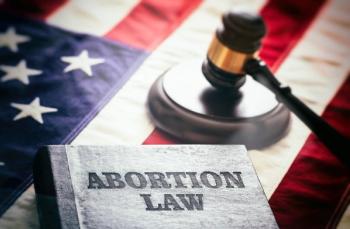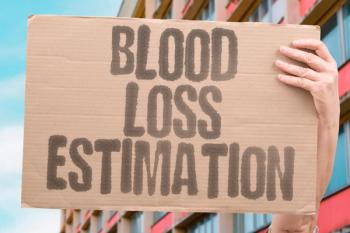
Why there is an opioid crisis
Drug overdoses, primarily from opioids, have now overtaken motor vehicle accidents as the leading cause of unintentional injury deaths in this Nation. How did this happen and what role should ob/gyns have in curtailing the issue?
Unlike Hurricane Irma, the opioid crisis took me unawares. I first began noticing more cases of heroin abuse among pregnant women when I moved to New Haven from NYC in 2002. But when I arrived in Columbus, Ohio, in 2011 the sheer number of addicted pregnant patients attending the Ohio State high-risk clinic was staggering. Nor was the problem limited to Ohio.
From 1999 through 2011, overdose deaths from prescribed opioids tripled nationally, and while these numbers remained relatively constant over the next 4 years, the number of overdose deaths from illicit narcotics-mostly heroin and fentanyl-tripled.1 Thus, by 2015, more than 2.5 million Americans had an opioid use disorder (OUD) from either prescription medications (77%) or illicit drugs (23%)1 and 90 Americans died of an opioid overdose every day.1,2 Drug overdoses, primarily from opioids, have now overtaken motor vehicle accidents as the leading cause of unintentional injury deaths in this Nation. It was also no accident that I found there to be an opioid epidemic in Ohio. By the time I arrived there, it had become the nidus of a national opioid epidemic.
How did this happen? Why now? Why Ohio? In his meticulously researched book, Dreamland, author Sam Quinones, starts and ends in Portsmouth, Ohio, to answer these questions.3 But his findings have far broader application for American medicine and society as a whole.
An iatrogenic crisis
Quinones makes the case that, like the road to hell, the road to the opioid crisis was paved with good intentions. For decades it was argued that American medicine had been overly conservative in use of narcotics for end-of-life care. In the early 1980s a number of palliative care pioneers began a vocal campaign to address under-treatment of cancer pain, particularly among terminal patients.
A few years later advocates appeared arguing for increased opioid treatment for patients with chronic pain. Many cited data published in a letter to the editor in The New England Journal of Medicine by Dr. Hershel Jick and his graduate student, Jane Porter, reporting that of almost 12,000 in-patients treated with generally short courses of various opioids, only 4 became addicted.4 This datum came from a large hospital database, was not applicable to chronic pain, but was subject to selection bias since there were no links to other relevant outpatient data. However, despite its lack of methodological rigor, that 1-paragraph letter was cited by pain treatment advocates as justification for expanded opioid use for many forms of non-cancer chronic pain.
Adding fuel to the fire was the 1986 Portenoy and Foley report that of 38 patients maintained on various opioids for non-cancer pain, in some cases for up to 7 years, only 2 developed an OUD, and both had a history of drug abuse.5 Dr. Portenoy soon became a leading voice for aggressive treatment of pain and inclusion of opioids in the management of non-cancer chronic pain.3 Increasing attention was focused on the physical, psychiatric, social and economic burden of chronic pain that annually affected 11.2 to 43% of American adults.1
This drumbeat grew louder and the mere presence of pain soon became anathema. Ultimately, both the Veterans Administration and Joint Commission pushed to make pain assessment a “fifth vital sign.” Soon, pain relief became an obsession with hospitals and physicians seeking to improve their patient satisfaction scores. As a consequence of this “pain revolution” opioid prescriptions exploded, peaking at 206 million in 2011.1 Helping to fuel this fire were busy primary care physicians who were bearing the burden of seeing these often-complex patients while being driven to churn patients by the introduction of managed care. So-called “pill mills” also proliferated, particularly in Ohio and the “Rust Belt,” many with unscrupulous owners offering little more than a prescription pad. The ultimate irony of this iatrogenic crisis is that there never was real evidence of the long-term efficacy of opioids for chronic pain because tolerance occurs so quickly, but there was abundant evidence of harms including OUD, fractures, myocardial infarction, and sexual dysfunction.6
Marketing of OxyContin
In 1996, early on in the “pain revolution,” Purdue Pharma marketed its sustained-release opioid, OxyContin. Quinones contends that the company was legitimately convinced that its sustained-release formulation and attendant stable blood levels would greatly reduce the peaks and troughs of narcotic levels that fuel addiction.3 This tenuous theory formed the basis for an extraordinary marketing campaign that highlighted some of the worst abuses of physician office “detailing” and conflicts of interest in continuing medical education (CME) programs that occurred before implementation of the 2002 PhRMA Code on Interactions with Healthcare Professionals. Purdue funded pain conferences at resorts, employed a bevy of paid speakers, flooded doctors’ offices with gift-bearing salesmen, and funded so-called patient support groups.7 Sales personnel were even trained to quote the Porter and Jick “study.”
Not surprisingly, OxyContin prescriptions soared from 670,000 in 1997 to 6.2 million in 2002.3 Between 2000 and 2010, oxycodone sales increased 287.3% and oxycodone accounted for the largest volume of opioids sold in the United States, with prescriptions accelerating further after 2005.8 As sales soared, so did the bonuses of Purdue salesmen and opioid overdose deaths, since OxyContin’s abuse potential proved as high as other opioids.1,3 This combination of increasingly lenient opioid prescribing practices and mass marketing of this potent opioid certainly accelerated the crisis, but there were other factors as well.
Hillbilly Elegy meets the OxyContin economy
Those who have read J.D. Vance’s Hillbilly Elegy, and our readers from Appalachia, will have a vivid image of the unique combination of Ulster-Scot stubbornness, social isolation, and grinding poverty that has plagued Eastern Kentucky, Southeast Ohio, Southwest Virginia and West Virginia for decades. These characteristics proved fertile soil for proliferation of pill mills, and OxyContin addiction. The collapse of manufacturing and the coal industry led to chronic unemployment and a spike in federal Supplemental Security Income (SSI) disability claims and Medicaid coverage. This, in turn, paid for OxyContin.
Eventually, towns like Portsmouth developed an entire OxyContin economy where good and services where bought and sold using pills of varying dose “denominations.” An entire cottage industry sprang up with Medicaid recipients going to pill mills for their OxyContin and then selling the pills for substantial dollar amounts. Rates of addiction and overdose deaths exploded, economic decline accelerated and the very social fabric of these rural communities unraveled. Indeed, the Ohio Valley and Appalachia, along with Maine and Alabama, became the epicenter of OxyContin abuse with rates 5 to 6 times the national average.7 But, incredibly, the worst was still to come.
Black tar heroin, a narco-criminal disruptive innovation
Traditionally, heroin has been sold in big cities at fixed locations by gangs and organized crime. Sources included Asia, the Middle East and Colombia and quality was poor due to serial dilutions by middlemen and intrinsic impurities. Most addicts were poor, urban, and members of minority groups. But in the early 1990s, a group of undocumented immigrants from Xalisco, Nayarit, an impoverished farming area in Southwest Mexico, developed an ingenious, innovative and diabolical strategy to sell locally grown heroin, called black tar, in the United States. They used cell phones to take orders and direct drivers to deliver the drug to customers. The drug was pure, the cost low, and the so-called Xalisco boys were non-violent, polite and efficient. Starting from the San Fernando Valley in California, they spread eastward, targeting white neighborhoods in small to moderate size cities to avoid conflicts with gangs, cartels, and other organized crime groups. They particularly targeted younger people.
Black tar heroin reached Columbus, Ohio in 1998, just as OxyContin sales and pill mills were spreading westward.3 Here these two malevolent forces met and interacted. Within a few years, addicted OxyContin users were switching to black tar heroin, which was cheaper and easier to access. Indeed, survey data suggest that 80% of heroin users began their OUD with nonmedical consumption of prescription opioids.9
Ominously, as Xalisco drivers and local cell “managers” were arrested and often deported rather than imprisoned because they carried only small quantities of drugs, they were quickly replaced by other eager, poor, young Xalisco rancheros who saw this as a relatively low-risk but very lucrative employment opportunity. And I have to reluctantly admit that a porous US-Mexican border exacerbated the problem. Later other groups entered the market, often abandoning their cocaine or methamphetamine business in favor of the more lucrative opioid trade. Overdose deaths from heroin, which had been far less common than those from prescription opioids, began accelerating in 2011 and by 2014 had exceeded prescription-related deaths.1 The crisis hit home as high school football stars began to die in bathroom stalls and middle-class college coeds overdosed in their dorm rooms.
The biology of addiction and adolescent susceptibility
It was not an accident that the Xalisco boys sought out adolescent victims. Opioids work through various receptors but reduce pain through high-affinity binding to the mu (µ) opioid receptor (MOPR). However, MOPRs are found throughout the brain and those located in the mesolimbic system, when activated, promote dopaminergic neuron transmission to create sensations of pleasure, relaxation and contentment.1 Adolescents are particularly vulnerable due to the immaturity for these pathways, coupled with their propensity for risk taking and the increased responsiveness to reward.10 Indeed, no group was more vulnerable to the ready availability of both the prescription opioid and heroin.
Take-home message
The current opioid crisis has multiple reinforcing etiologies. It represents a failure of evidence-based medicine and a remarkable example of how public opinion can be shaped by a few vocal advocates whose emotional appeal transcends their empirical evidence. Of course, all this was synergistically complemented by a massive and misguided industry marketing campaign. But the opioid crisis also reflects the hollowing out of America’s once-vital manufacturing mid-region and the social peculiarities of my Ulster-Scot relatives. Much of the political bitterness on display in the last presidential election stems from the same unmet economic and social needs, and anti-authoritarian tradition.
But the opioid crisis has also given birth to some very creative public policy innovations including implementation of statewide monitoring of opioid prescriptions, regulation of pill mills, heroin courts that enforce treatment regimens rather than jail terms, improved public funding for treatment centers, as well as increased emergency access to naloxone and anti-abuse medications. The Joint Commission, CMS and other agencies have begun to de-emphasize simplistic approaches to pain control. A number of governors and states stand out but significant credit has to go to Ohio’s Governor John Kasich. He was among the first to sound the alarm, and among the first to implement various narcotic control, rehabilitation and mental health measures. And the justice system ultimately acted as well. Law enforcement has also innovated to better deal with Xalisco-type heroin rings. Moreover, in 2007, Purdue Frederick Company Inc. and 3 company executives pled guilty to criminal charges of misbranding OxyContin by claiming that it was less addictive than other opioids. The company ultimately paid over $600 million in fines.7
While these trends are salutary, physicians can play a pivotal role in curbing the epidemic by returning to traditionally stringent criteria for opioid prescriptions, utilizing a multimodality non-opioid approach to chronic pain and by better understanding opioid pharmacology. Ob/gyns are uniquely positioned to reduce opioid abuse because pregnancy represents a period of intensive contact with providers and because pregnant women are uniquely motivated to curb their OUD.11 In a future editorial, I will discuss steps ob/gyns can take to confront the opioid crisis.
REFERENCES
1. National Academies of Sciences, Engineering and Medicine. Pain Management and the Opioid Epidemic: Balancing Societal and Individual Benefits and Risks of Prescription Opioid Use. Washington, DC: The National Academies Press; 2017.
2. Rudd RA, Seth P, David F, Scholl L. Increases in Drug and Opioid-Involved Overdose Deaths - United States, 2010-2015. MMWR Morb Mortal Wkly Rep. 2016 Dec 30; 65(5051):1445-1452.
3. Quinones, Sam. Dream Land: The True Tale of America’s Opiate Epidemic. Bloomsbury Press, New York, 2016.
4. Porter J, Jick H. Addiction rare in patients treated with narcotics. N Engl J Med. 1980 Jan 10;302(2):123.
5. Portenoy RK, Foley KM. Chronic use of opioid analgesics in non-malignant pain: report of 38 cases. Pain. 1986 May;25(2):171-86.
6. Chou R, Turner JA, Devine EB, Hansen RN, Sullivan SD, Blazina I, Dana T, Bougatsos C, Deyo RA. The effectiveness and risks of long-term opioid therapy for chronic pain: a systematic review for a National Institutes of Health Pathways to Prevention Workshop. Ann Intern Med. 2015 Feb 17;162(4):276-86.
7. Van Zee A. The promotion and marketing of oxycontin: commercial triumph, public health tragedy. Am J Public Health. 2009 Feb;99(2):221-7.
8. Kenan K, Mack K, Paulozzi L. Trends in prescriptions for oxycodone and other commonly used opioids in the United States, 2000-2010. Open Med. 2012 Apr 10;6(2):e41-7.
9. Muhuri P, Gfroerer J, Davies MC. Associations of Nonmedical Pain Reliever Use and Initiation of Heroin Use in the United States. CBHSQ Data Review. August 2013. https:/www.samhsa.gov/data/sites/default/files/DR006/DR006/nonmedical-pain-reliever-use-2013.htm. Accessed 9/14/2017
10. Perreault ML, O'Dowd BF, George SR. Dopamine Dâ-Dâ receptor heteromer regulates signaling cascades involved in addiction: potential relevance to adolescent drug susceptibility. Dev Neurosci. 2014;36(3-4):287-96.
11. Muhuri PK, Gfroerer JC. Substance use among women: associations with pregnancy, parenting, and race/ethnicity. Matern Child Health J. 2009 May;13,(3):376-85
Newsletter
Get the latest clinical updates, case studies, and expert commentary in obstetric and gynecologic care. Sign up now to stay informed.









